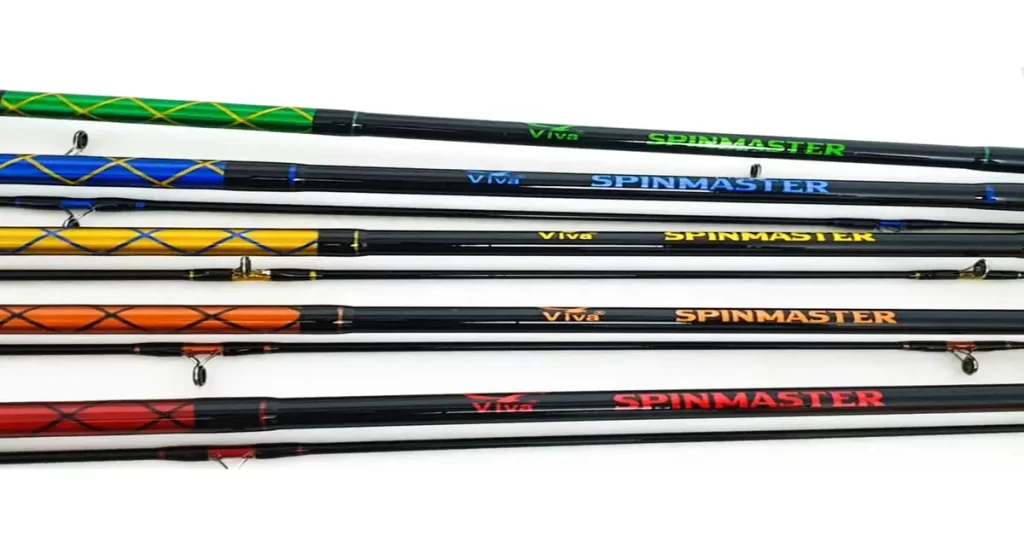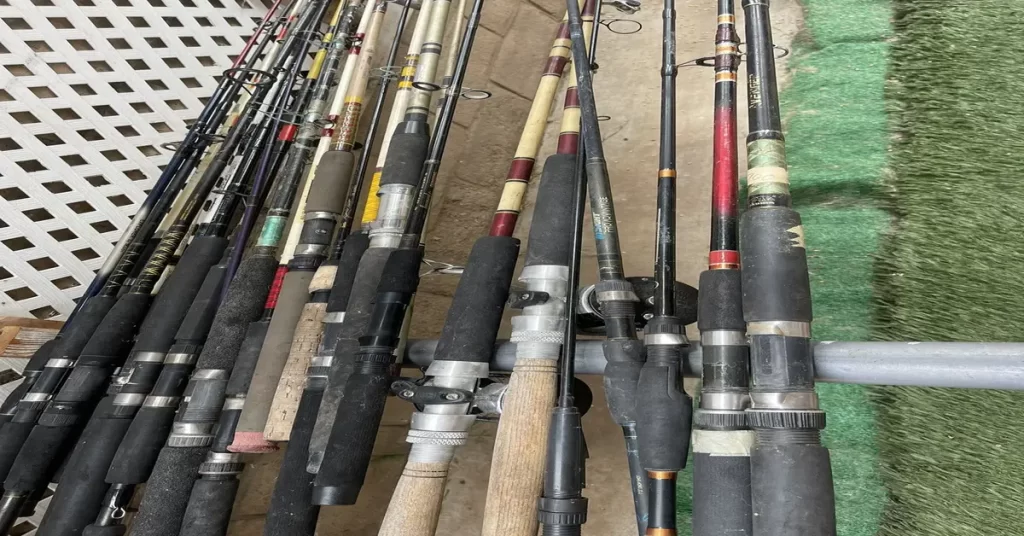
Table of Contents
Introduction to: Why are Fishing Rods so Expensive?
Fishing is more than just a pastime; it’s a time-honored tradition and a way of life for millions of enthusiasts around the world. While it’s possible to cast a line into the water with nothing more than a stick and some string, most anglers prefer to invest in high-quality fishing gear, and at the center of this gear stands the fishing rod. However, if you’ve ever shopped for a fishing rod, you’ve probably noticed a vast price range, from budget-friendly options to rods that cost a small fortune. So, what’s the deal with the high price tags on some fishing rods? In this blog post, we’ll delve deep into the world of fishing rods to understand why they can be so expensive and what factors contribute to their price.
1. Materials Matter
When it comes to understanding the pricing of fishing rods, one of the most significant factors to consider is the choice of materials used in their construction.
1.1. Graphite vs. Fiberglass: The Battle of the Materials
Fishing rods can be constructed from various materials, but two of the most common choices are graphite and fiberglass. Graphite rods are generally lighter and more sensitive, making them a popular choice for serious anglers. On the other hand, fiberglass rods are known for their durability and versatility. The choice of material significantly impacts the cost of the rod, with high-quality graphite rods generally commanding a higher price.
1.2. The Evolution of Carbon Fiber Technology
In recent years, there has been a surge in the use of carbon fiber in fishing rod construction. Carbon fiber offers an ideal combination of strength, sensitivity, and lightness. This advanced material has pushed the boundaries of what fishing rods can achieve, but it also adds to the cost, as carbon fiber is relatively expensive to produce.
2. Advanced Engineering and Design

Beyond the choice of materials, the engineering and design of a fishing rod play a vital role in determining its price.
2.1. Custom vs. Mass-Produced Rods
Many fishing rods are mass-produced to cater to a wide range of anglers, and these rods are generally more affordable. However, custom-made rods designed to meet the specific needs of an individual angler can be considerably more expensive. Custom rods require a higher level of craftsmanship and attention to detail.
2.2. Taper, Action, and Power: What Do They Mean?
Understanding the technical aspects of rod design can help justify the price of high-end rods. Factors like rod taper, action, and power all contribute to a rod’s performance, and creating a rod with precisely tuned characteristics can be a complex and time-consuming process.
2.3. Guide Materials and Configurations
The guides on a fishing rod play a critical role in line control and casting accuracy. High-quality guides are often made from materials like titanium or silicon carbide, which can add to the overall cost. The number and configuration of guides on a rod also impact its performance and price.
3. Craftsmanship and Artistry
Hand in hand with advanced engineering and design is the craftsmanship and artistry that go into creating a fishing rod.
3.1. Handmade vs. Machine-Made Rods
Handmade fishing rods are often seen as a symbol of craftsmanship and precision. Craftsmen spend hours, or even days, meticulously building each rod. This level of attention to detail and the personal touch is reflected in the price of these high-end rods. In contrast, machine-made rods are produced at a faster rate, resulting in lower costs.
3.2. Handle Material and Design
The handle of a fishing rod is a critical component for angler comfort and control. High-end rods often feature premium materials like cork or EVA foam, and their design is optimized for ergonomics, contributing to the overall cost.
3.3. Customization and Personalization
Many high-end rod manufacturers offer customization and personalization options, allowing anglers to choose handle materials, colors, and even their name or logo on the rod. These bespoke features drive up the price but provide a unique and personalized fishing experience.
4. Brand Reputation and Prestige
A fishing rod’s price is also influenced by the reputation and prestige of the brand behind it.
4.1. Legacy and Tradition
Some fishing rod manufacturers have a long and storied history, dating back several generations. The legacy and tradition associated with these brands often result in higher prices, as anglers are willing to pay for the assurance of quality and heritage.
4.2. Research and Development Investments
Reputable brands invest heavily in research and development to create innovative and high-performing rods. This dedication to advancing rod technology can lead to higher costs, but it also ensures that anglers have access to cutting-edge gear.
4.3. Innovation and Breakthrough Technologies
Innovation in rod design and materials is another factor that can contribute to high prices. Manufacturers who pioneer new technologies, such as nano-resin or advanced grips, often charge a premium for their groundbreaking products.
5. Limited Edition and Collectible Rods

For some anglers, the allure of owning a limited edition or collectible fishing rod is worth the steep price.
5.1. The Allure of Exclusivity
Limited edition rods are produced in small quantities, making them highly sought after by collectors and enthusiasts. The exclusivity of these rods drives their prices higher, as anglers are willing to pay for a unique piece of fishing gear.
5.2. Rarity and Limited Production Runs
Some manufacturers create rods in limited runs, featuring special designs, colors, or commemorating specific events. The rarity of these rods and their potential as collectible items contribute to their elevated prices.
5.3. Collectors’ Value and Resale Market
High-quality, limited edition rods often retain or even appreciate in value over time. This potential for future resale at a higher price is a factor that influences the initial cost for collectors and investors.
6. Environmental and Ethical Considerations
The sustainability of materials and ethical manufacturing practices are increasingly influencing the pricing of fishing rods.
6.1. Sustainability in Fishing Rod Manufacturing
As awareness of environmental issues grows, anglers are increasingly seeking eco-friendly fishing gear. Some manufacturers use sustainable materials and production methods, which can add to the cost of the rod but contribute to a more environmentally friendly industry.
6.2. Fair Labor Practices and Ethical Sourcing
Consumers are becoming more conscious of the ethical implications of the products they buy. Brands that invest in fair labor practices and ethical sourcing might incur higher production costs, which are reflected in the price of their rods.
7. Choosing the Right Rod for Your Needs
Selecting the right fishing rod involves considering various factors and understanding your personal preferences and fishing style.
7.1. Budget-Friendly Options
For anglers on a budget, there are numerous affordable fishing rods available. These rods may lack some of the high-end features but can still provide an enjoyable fishing experience.
7.2. Mid-Range Rods
Mid-range rods strike a balance between affordability and quality. They offer decent performance and features without breaking the bank.
7.3. High-End and Custom Rods
High-end and custom rods are tailored for serious anglers who demand top-notch performance and specialized features. These rods come with a higher price tag but offer the best in terms of material quality, craftsmanship, and performance.
8. The Future of Fishing Rods: Trends and Predictions

As technology and consumer demands evolve, the fishing rod industry is also adapting and innovating.
8.1. Sustainable Materials and Practices
The shift toward sustainability and eco-friendliness is likely to continue, with more manufacturers adopting environmentally conscious practices and materials.
8.2. Technological Advancements
Technological innovations will continue to drive the development of fishing rods, with a focus on lighter, stronger, and more sensitive materials that enhance the angling experience.
8.3. Inclusivity and Accessibility
Efforts to make fishing more inclusive and accessible to a broader audience may lead to the development of more affordable yet high-quality rods.
9. Conclusion to: Why are Fishing Rods so Expensive?
In conclusion, the high cost of fishing rods is a reflection of the complex interplay between materials, design, craftsmanship, brand reputation, exclusivity, ethics, and innovation. While it’s true that some fishing rods carry exorbitant price tags, they often cater to serious anglers who are willing to invest in top-notch gear to enhance their fishing experience.
Whether you’re an enthusiast seeking a collectible piece or a beginner looking for an affordable but reliable rod, the fishing rod market offers a wide range of options to suit different needs and preferences. Understanding the various factors that contribute to the price of fishing rods can help anglers make informed decisions when selecting their ideal fishing gear.
In the end, the price of a fishing rod is not just a reflection of its materials or construction; it’s a reflection of the passion, dedication, and love for the sport that anglers hold dear.
Remember, the joy of fishing comes not only from the quality of the gear but from the experience itself – the thrill of the catch, the peacefulness of the water, and the camaraderie among fellow anglers. Also check out: Why are some fishing hooks red?
Happy fishing! Catfishingusa.com Blog

